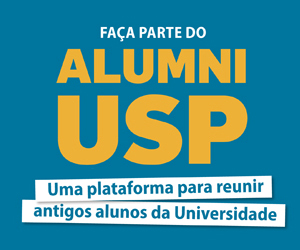CALDAS, Marília Junqueira
Theoretical study of conventional and/or organic semiconductors, with emphasis on systems of relevance for Si nanotechnology, organic aromatic polymers and hybrid organic/inorganic interfaces. We use many different techniques, for instance empirical force fields for structural properties, and, for electronic structure, from totally empirical methods up to fully ab initio quantum mechanics formalisms within Hartree-Fock or Density Functional theory. When needed, we also move up to Beyond-Mean-Field approaches accounting for electronic correlation effects. At the moment, our main efforts are:
a) For Si nanotechnology, oxidation and functionalization of Si surfaces, and interface formation (Si/SiO2 or Si/organic layers);
b) For organic polymers, we focus on systems of interest to photovoltaics or light emission, including polyphenylene-vinylenes, polythiophenes, polyanilines and others, studying (i) structural properties for amorphous films; (ii) electronic, optical and transport properties for prototypical systems; (iii) polymer/metal and polymer/oxide interfaces.
CHITTA, Valmir Antonio
Physics of new semiconductor materials: Using high magnetic field and low temperature techniques we investigate optical, electrical and magnetic properties of semiconductor heterostructures. The heterostructures are based on group III-V, IV-VI and III-Nitrides semiconductors diluted magnetic semiconductors of these groups, and on semiconductor oxides. The experimental techniques used are: photoluminescence, photoreflectance, Hall effect, magnetoresistance, magnetization and magnetic susceptibility. The main interest is to investigate properties related to the spintronics and nanotechnology development.
CORNEJO, Daniel Reinaldo
Experimental study and computational modeling of low-dimensional nanostructured magnetic systems, such as nanoparticles, nanowires and thin films. Experimental analysis and modeling of mesoscopic phenomena governed mainly by magnetic interactions, such as magnetic hysteresis, exchange-bias, magnetotransport and related phenomena. Experimental analysis and modeling of ferrofluids and liquid crystals doped with magnetic nanoparticles.
DIAS DA SILVA, Luis Gregório
My research focuses on theoretical and computational studies of electronic correlation effects in nanostructured materials (semiconductor quantum dots, molecular junctions, molecules adsorbed on surfaces, graphene nanoribbons) and, more recently, the study of topological insulators. These materials are ideal for investigating a rich variety of physical phenomena, such as many-body effects (e.g., the Kondo effect), quantum phase transitions,nonequilibrium electronic transport and topological phases of matter.
To this end, I employ state-of-the-art numerical methods for strongly correlated systems, namely the numerical renormalization group (NRG) and the density matrix renormalization group (DMRG), along with their respective time-dependent versions (tNRG and tDMRG).
For more information, please visit http://www.fmt.if.usp.br/~luisdias/
HENRIQUES, André Bohomoletz
Quantum effects such as superposition and entangling of electronic orbital states and spin are resources with a potential application in the technologies of the future.
Some of the challenges in this area are the optimization of the electronic spin lifetime and of the spin manipulation techniques in very short time scales.
We employ pump-and-probe spectroscopy to investigate magnetic and non-magnetic semiconductor nanostructures. In this technique, lasers with ultra short pulses
(femto or picosecond) are used to manipulate the electron spin. The train of pulses generated by the laser is divided in two (pump and prove). The sample is
perturbed by a pump pulse, and the changes in the sample caused by the perturbation, such as magnetization, reflectivity, absorption and luminescnece, are monitored with
femtosecond resolution. The project involves the development of theoretical models required to interpret the experimental data.
Link: http://siveab-5.if.usp.br/~andreh/pesquisa.html
SANTOS, Antonio Domingues dos
My research activities are in the nanoscience and nanotechnology areas. The main objective is the development of new methods for the production and the characterization of magnetic materials on the micro and nanoscopic scales. Recent work includes:
1) Production by gas aggregation method and structural/magnetic characterization of magnetic and noble metals nanoparticles.
2) Experimental micromagnetic studies on magnetic microscopic objects by optical near-field magneto-optical methods.
3) Study of the interaction between surface plasmons and magnetism.
SILVA, Euzi C. Fernandes da
Research in the area of semiconductor materials with emphasis in the development of solid state devices (photodetectors and lasers) based on the III-V compounds operating in the infrared spectral region. The experimental characterization of the devices is performed with electrical measurements (dark current and photocurrent), transport measurements (Hall and Shubnilov-deHaas) and optical spectroscopy (FTIR, photoluminescence (PL) and photoluminescence-excitation (PLE))









